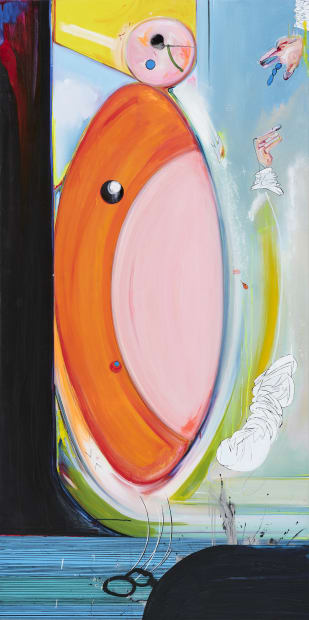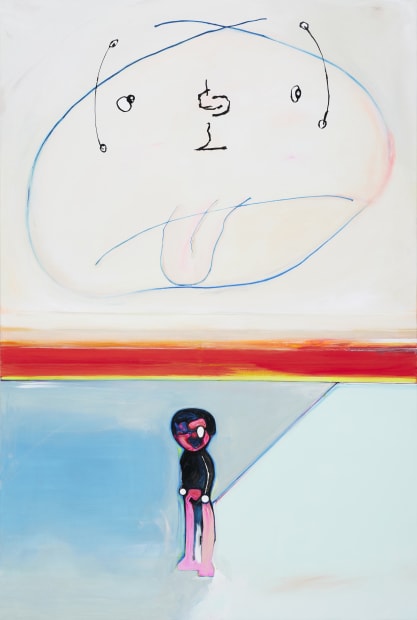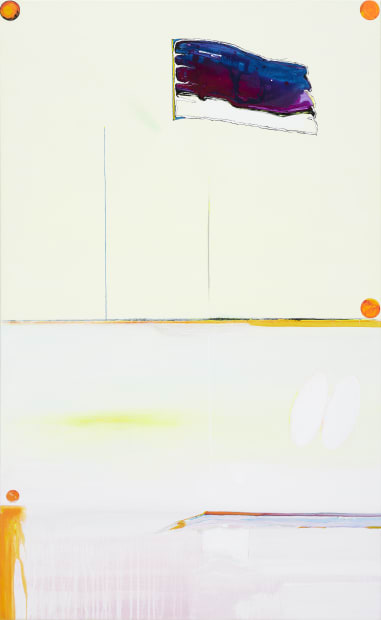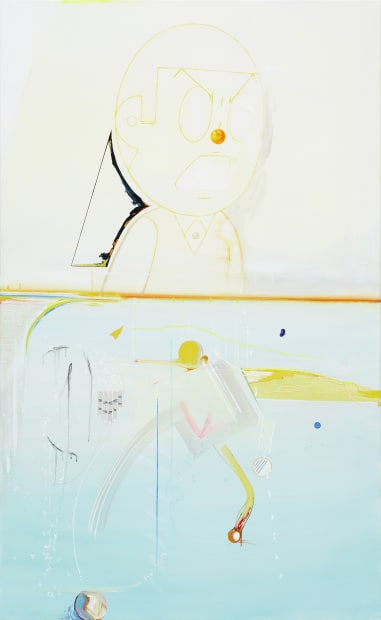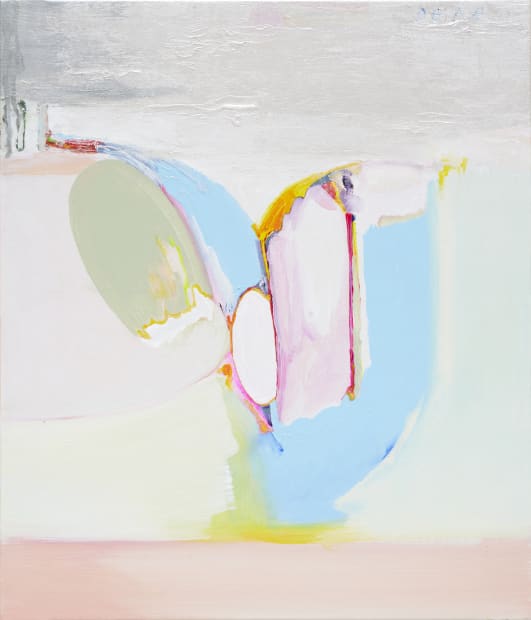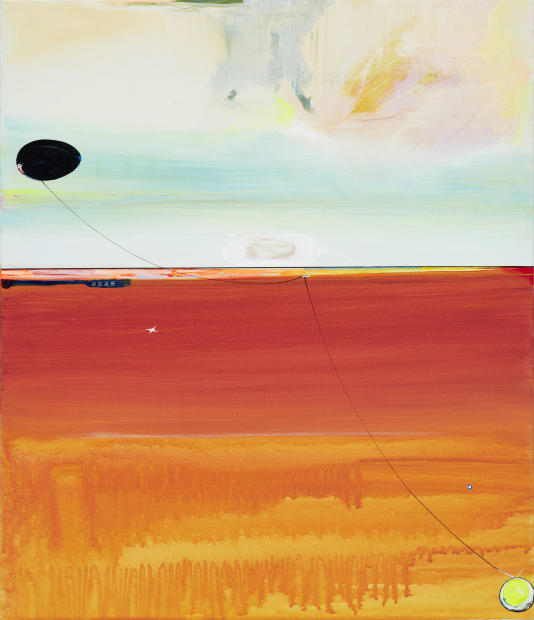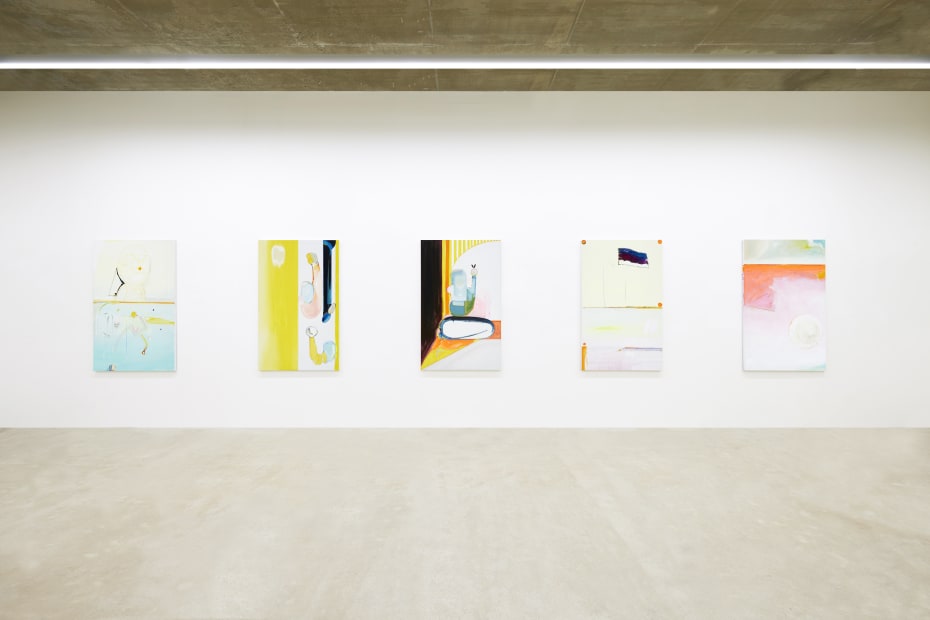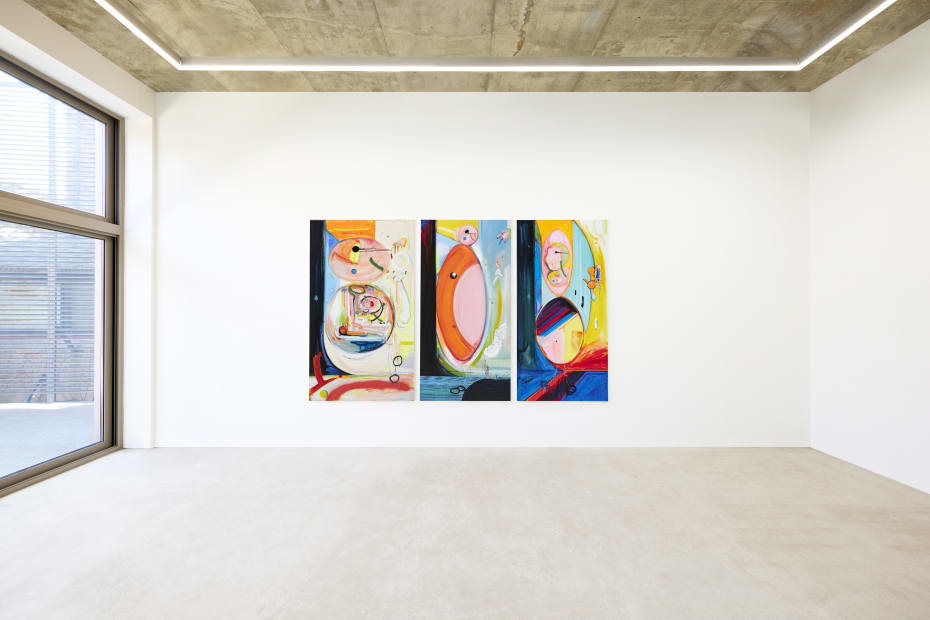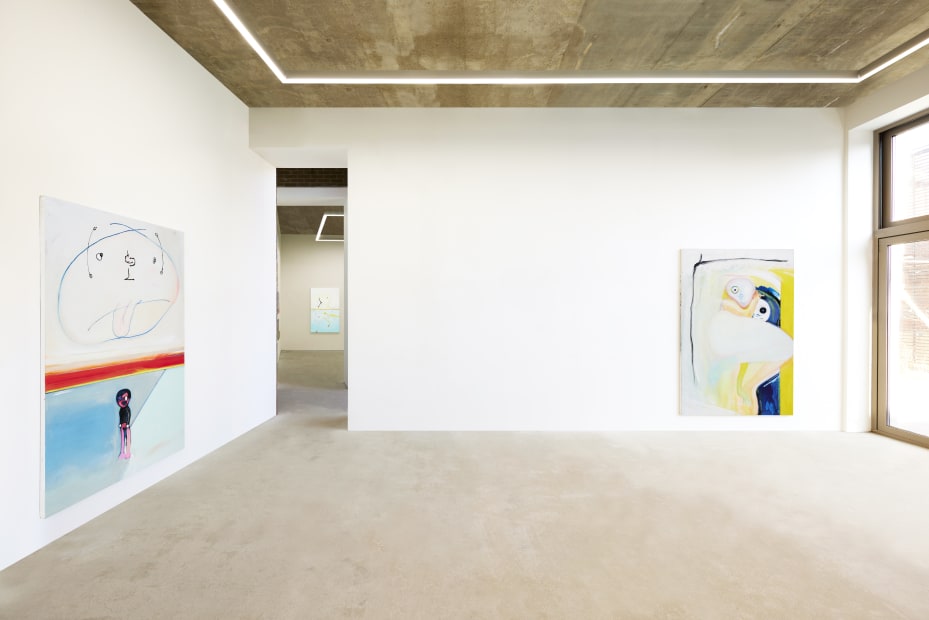Dear: 유창창 Changchang Yoo
우리는 그림 앞에서 형상을 알아보기 위해 필사적이다. 그림 안에 형상이 무엇인지 알아볼 수 있을 때, 게다가 그 형상이 현실의 대상과 닮으면 닮을수록 화가의 솜씨를 높이 평가하기도 한다. 현대미술을 어느 정도 이해한다 하더라도 과연 이 알 수 없는 형상이 어디에서 기인하는지 (차마 묻지는 못하더라도) 그 질문에서 벗어나기란 쉽지 않다. 이때 화가가 다가와 “저의 내면을 그렸습니다”라고 말한다면 우리는 어떻게 반응해야 할까. 일단 당황하는 기색은 보이지 말자.
유창창은 그림을 바둑에 비유했다. 그림은 사각의 판 위에 한 수 한 수를 두는 바둑과 같다는 것이다. 경우의 수와 변수가 많은 바둑말이다. 그는 앞의 수를 보고 다음 수를 생각하듯이 그때그때 떠오르는 생각과 상황을 그려냈다. 왜냐면 그림에 있어 정해진 규칙이나 계획을 지키는 것보다 어떤 무드를 전달하는 것이 더 중요하다고 생각했기 때문이다. 특히 이번 개인전에 선보이는 작품은 ‘끝나지 않은 게임’ 같길 바란다고 했다. 바둑판의 여백, 아직 남은 경우의 수가 존재하기를 바란다는 뜻이다.
유창창 개인전의 전시명인 <Dear>는 편지 서두에서 수신인을 호명하는 단어이자 수신인에 대한 발신인의 애정과 존경을 표현하는 단어다. 이번 전시는 그가 불특정 다수에게 쓴 편지인 셈이다. 그런데 편지는 글이 아닌 이미지로 쓰여졌다. 편지인데 ‘읽을 수 없는’ 편지인 것이다. 그의 편지는 그저 무드만 전달한다. 여기서 작가가 말하고자 하는 무드는 편지가 갖는 상냥함, 따뜻함 그리고 애틋함이다. 두 사람이 얼굴을 맞대고 귓속말로 소곤거리는, 둘만의 이야기를 나누는 듯한 형상은 무드에 비밀스러움을 더한다.
자신의 감정을 표현하고자 할 때, 빠르고 효과적인 방법은 사람들 사이의 공통분모인 언어를 사용하는 것이다. 인간의 내면은 언어를 통해 확고한 골격을 갖추고 합의를 이뤄 비로소 어떤 형태를 갖게 된다. 그래서 언어는 보편성을 향한 노력이다. 직감에 의지하지 않고 누구나 동일하게 이해할 수 있는 것을 향한 노력이다. 한데 우리의 내면이 모두 언어로 표현된다는 것은 어림도 없는 일이다. 누구나 ‘말로 다 표현할 수 없는’ 감정, 그 여백이 얼마나 넓고도 깊은지 잘 알고 있다. 사랑하는 마음, 미안한 마음 그리고 고마운 마음을 전하기 위해 편지지에 쓰고 지우기를 반복했던 우리의 모습을 복기해보자. 심지어 편지를 쓰다 포기하기까지 했던.
기실 말이 되지 못한 내면은 이미지가 되곤 한다. 이미지는 말이 될 수 없었던 내면의 여백을 표현하는 것이며, 영원히 비밀로 숨어 있지 않게 하는 수단이다. 프랑스 시인 알프레드 드 뮈세 Alfred de Musset는 “인간의 내면에는 태어나지만 결국 침묵 속에 죽게 될 알려지지 않은 세계가 존재한다’고 말했다. 모호함과 불명확함으로 인한 다의성과 주관성이라는 이미지의 이 치명적인 단점은, 그 기질을 발휘할 때 비로소 침묵 속에 죽어가는 세계를 (잠시나마) 구원할 수 있다. 유창창의 작품은 자신의 내면을 고독하게 두지 않기 위해 형상과 색을 입혀 어떤 식으로든 외부 세계와의 균형을 찾으려고 노력하는 그림이다. 인간의 존재를 중요시하고 인간의 능력과 성품 그리고 현재의 소망과 행복을 귀중하게 생각하는 정신이 인본주의라면, 그의 노력이 진정한 인본주의다.
유창창은 “그림을 예쁘게 그리고 싶다”고 말했다. 여기에 “다른 사람들도 예쁘게 봐줬으면 좋겠다”고 덧붙였다. 지극히 주관적이고 감성적인 말이다. 아름다움이란 개인의 내면에서 출발한다. 사회적 합의는 불가능하다. 그런데 어떻게 다 큰 어른이 ‘감히’ 그런 말을 내뱉을 수 있는가. 그것도 진지한 표정으로! 그의 말이 허무맹랑하고 동의할 수 없으면서 한편으로 용인되고 우리의 마음을 자극한다. 그래서 우리는 그의 말을 받아들여야 한다. ‘무용한’ 그 말이 우리의 내면을 ‘대신’하기 때문이다.
The spectator’s gaze into paintings is desperately pareidolic. As recognizable figures come forth from the canvas, the spectator feels assured and appreciative of the painter’s competence. Spectators with a working understanding of modern and contemporary art often harbor a question of where this pareidolia comes from, even its utterance is eschewed. What if, as the spectator’s mind was ballooning with that very question, the artist approaches nearby and explains “the painting is an expression of my inner self?” Keep calm.
Changchang Yoo likens paintings to a board of go, where the 19-by-19 grid of tiles need to be territorialized turn-by-turn. Two players plays as a black or white stone, and despite the relatively simple rules, the game is extremely complex with a vast number of moves and possible formations. The ability to see further into future moves and possible scenarios dictates victory. Yoo puts the brush to the canvas in similar fashion, anticipating subsequent possibilities and placements that will result in its wake. For the artist, tracing and conveying a distinct mood through a painting holds merit over following set rules or premeditated plans. In this solo exhibition, he expressed his hope of presenting works that convey a sense of an inconclusive game in reference to the game of go which has ended with possible, unfulfilled moves left on the grid.
Exhibition title 〈Dear〉 is a reference to the salutation or word of welcome that most often opens the body of the letter. Consider his solo exhibition a letter to an unspecified mass of recipients. However, the body of that letter holds images instead of text. A letter that may not be read, but only experienced as moods. Specifically, the letter conveys moods of warmth, kindness, and even affection. Two people conversing face to face in whispered voices, adds a sense of secrecy.
Conversations in a shared language is a quick and effective means of expressing one’s thoughts and feelings to another person. The inner person is sorted through internal dialogues and negotiations that ultimately lead to consensus and tangibility. One might say that language is what guides us to universality. It is a vehicle that drives actual shared understanding and away from dependency in individual intuition. Of course, that is not to say all our inner person may be expressed entirely by language. Certainly, there are swaths of emotions that words fail to encapsulate and convey. Anyone who has written a letter to share feelings of love, sorrow, penitence, and even gratitude will recall the hesitant pen, whiteouts, and crumpled papers. Some may have even torn the unfinished letter in complete frustration.
In fact, some inner meanings that fail satisfying elocution often find their way out as imagery. Such imagery are expressions of the inner negative space, freed from a fate of indefinite valence. French poet Alfred De Musset pointed to those hidden recesses and secret compartments as “It is an entire world that each one carries within him, an unknown world that is born and dies in silence!” When fomented, the perilous frailty of image in its ambiguity and subjective opacity may save the world from suffocating in silence, even if for a while. Yoo’s paintings are projected outward from his inner world to reject the isolation of its his inner self, presented in form and color to strike a sense of parity with the outer world. His deep appreciation for human existence, cherishing of its condition and possibilities is rooted in humanism.
"I want the canvas to capture something gorgeous" mutters Yoo before adding, “I hope people gaze upon it and find beauty.” The utterance could not be more subjective and emotive. Beauty comes from within, and by its nature, external, social consensus is unattainable. Yet here he is muttering hopes in earnest. His hope might not find every audience or agreeance, yet it strikes a deep chord somewhere in our hearts. The words resonate and remind us of our own inner person.
